#Clint Eastwood: The Last Legend
Photo
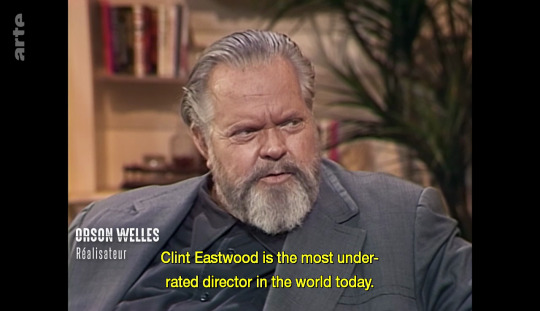

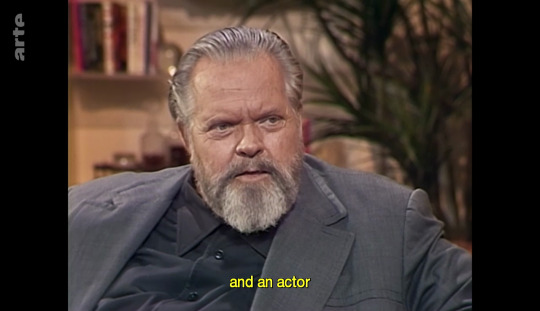


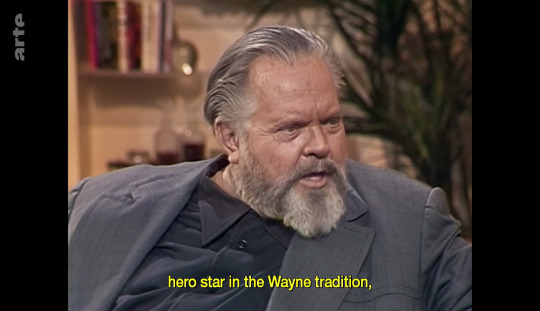
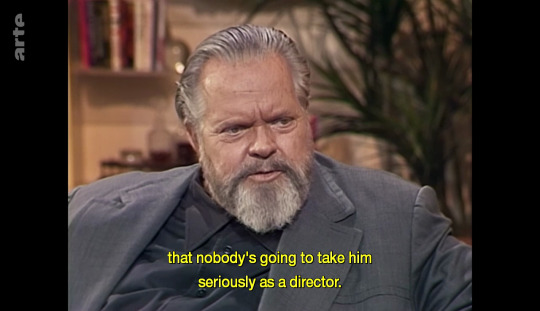
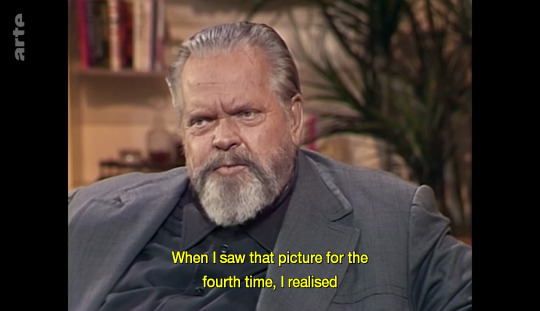


Orson Welles talking about Clint Eastwood in Clint Eastwood, la dernière légende (Clélia Cohen, 2022)
#Clint Eastwood la dernière légende#Clint Eastwood#Clélia Cohen#quote#2022#Orson Welles#Clint Eastwood: The Last Legend#documentary#film#cinema#western#eastwood#director#actor
318 notes
·
View notes
Photo

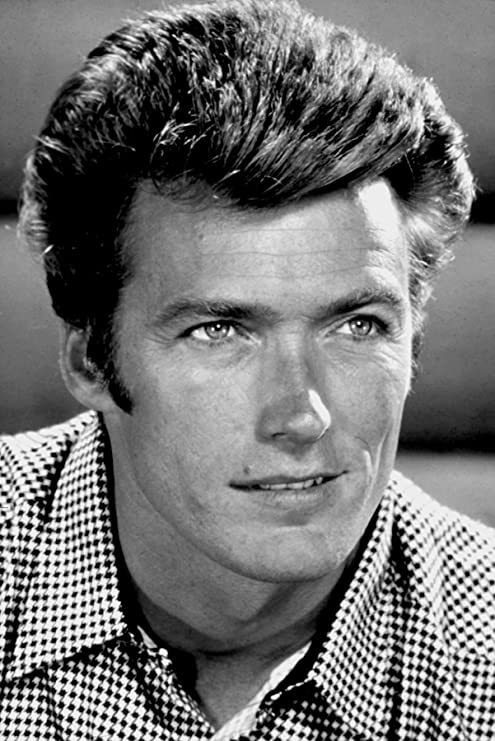
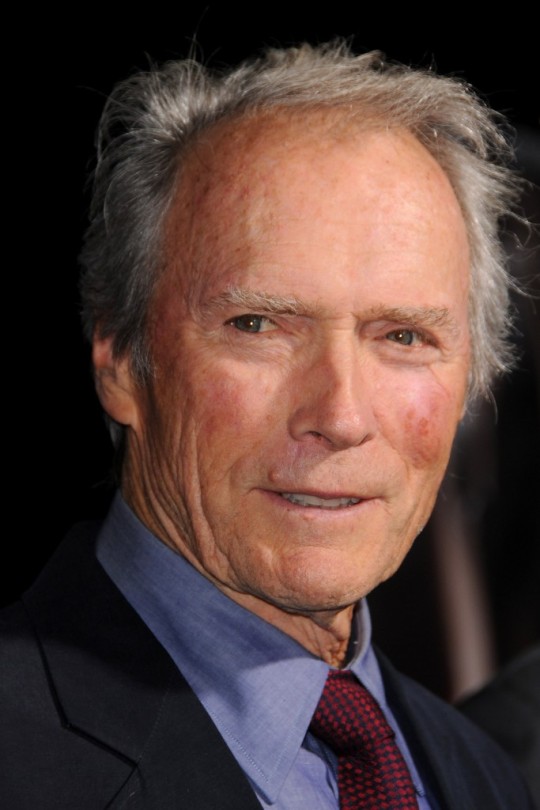
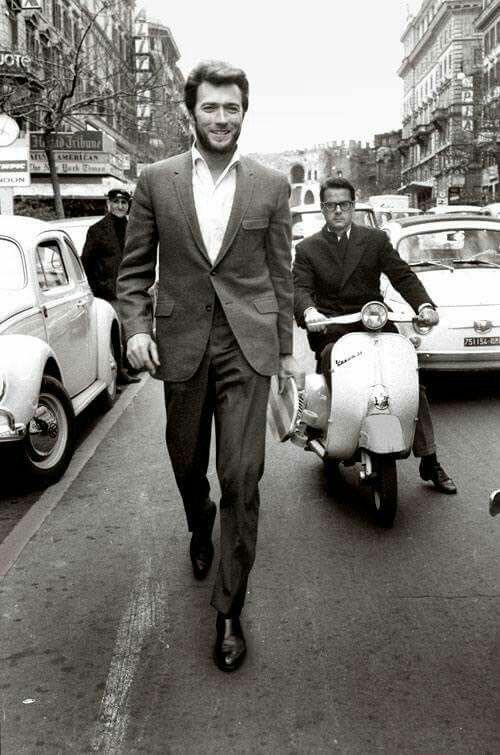
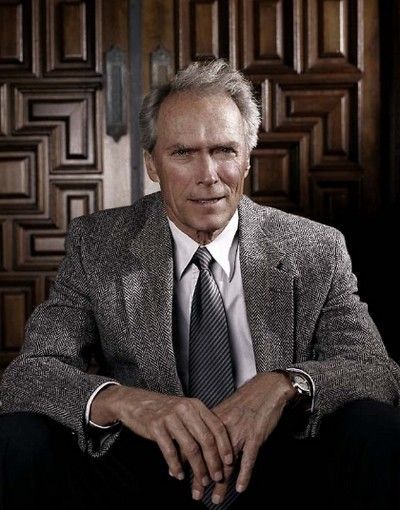
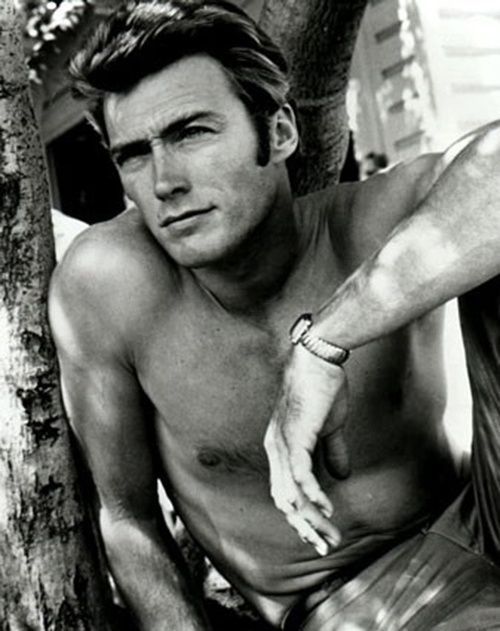
Askjdjslasjalsdks I’m late to post for Clint’s birthday.
93 and going strong! Can’t wait to see the new movie he’s making.
#Clint Eastwood#Happy Birthday#Legend#Things got hectic the last few weeks so I'm late to post anything
18 notes
·
View notes
Text
i think that the effect marty’s escapades (including the game) would have on people in his present wound be 1931 at the least, 1955, and then 1885 at the most. some of the reasoning might be a little headcannony?? idk i hope this makes sense
he did not have that huge of a public effect in 1931, like other than emmet, edna, and arthor (and trixie too ig) he didn’t really do much? he helped with the arrest of kid tannen but (as shown in the citizen brown timeline) didn’t get any credit, all the credit basically went to emmet and maybe edna. and arthor might’ve told his kid (george) about getting “recruited” for a government thing (and i feel like when george grew up a bit, he didn’t believe his father’s stories about getting recruited by the g men and so the story was never really passed down to his kids) but other than that i can’t imagine a huge impact or really that much of an impact at all, which i guess, good job marty for laying low
in 1955 he probably definitely had the biggest effect on his parents. they are definitely going to the remember that kinda weird kid that helped them get together, even more so when george (probably) tells lorraine about how marty has spent that entire week, only trying to get them together. calvin is definitely a huge part in often retellings of them falling in love (sorry marty lol). biff would’ve remembered calvin too and probably still holds a grudge against him for embarrassing him and the manure. other then them i think the rest of the kids would remember calvin too, maybe not by name or appearance or anything but by remembering the kid who played that weird song at the dance or the kid who bested biff that one time.
i like to think that after marty successfully left 1955, george and lorraine asked doc where calvin had gone like a month later and doc panics and says that he died. rip marty. ik that something similar to that happens in one of comics but i haven’t read those so they aren’t canon to me. doc ends up become a mcfly family friend and (lone pine) marty grows up around him. at some point (maybe during george and lorraines retellings) one of them mentions how a) calvins middle name was marty and inspired martys name and b) he was docs nephew but died shortly after that week which cues marty (probably around 15, 16 at this point) bursting into docs lab like “how come you never told me i was named after your dead nephew!!?!?!??” >:((
anyway, back to you regularly scheduled analysis:
last but not least, what happened in 1885 would’ve had the biggest effect. assuming that buford was an extremely huge crime guy in town and that he got arrested after his duel with marty (i dont remember if this actually happens in canon or not), the story of how a kid from out of town, by the name of clint eastwood, bested buford “mad dog” tannen, (who is basically known through out the town that if you get in duel with him you’re already dead) without even using a gun. purely just by out smarting him with a makeshift oldtimey bulletproof vest, would be a huge story. and considering how many people were witnesses to the duel and eastwoods mysterious death shortly after, this story must’ve become big in the town’s history. also, considering how marty said that everyone in school knew the story of clara clayton, it wouldn’t be a long shot to say that most (if not all) the students knew the story of clint eastwood. i would like to think that teachers would talk about the story as evidence of “brain over brawn” or something
i can imagine marty, once he gets back from all his time traveling, having to write an essay about the story of clint eastwood and just slightly panicking because that’s him how the fuck is he supposed to write an essay about his own first person perspective and pretended that it was written by someone who read the story in a textbook a hundred years later?? i can also imagine someone writing a book the eastwood that’s like realistic fiction, trying to guess who this guy really was and how did he really die, called like “a stranger named eastwood” or smthn. because they’d probably have maggie and seamus’s tellings of how they found him knocked out (having crashed into the fence) and in weird clothes. idk, i like the idea of clint eastwood being a hill valley historical figure shrouded in mystery and theories and stuff
anyway, i hope this made sense :) somethings kinda got away from me oops
this was mostly just me seeing how it was to write down my thoughts like this, so if you read all this congrats on participating in my experiment ig 🍾
#back to the future#marty mcfly#i love the idea of people writing stories about who clint eastwood might’ve been#what if it’s a class assignment#and marty basically then has to write fanfiction about himself#anyhoo#i was thinking about his effects last night and thought it would be good to get them down#i might do more of these#got alot of ideas stuck in this here noggin o mine#fiddl is sorry about your barn#local legend clint eastwood
43 notes
·
View notes
Text
Absolutely insane ending to a magnagothica maleghast game
My goregrinder necromancer had amazing survivability left with 4hp blood rage and the 5+ Defense under 3hp trait, and I had two units left on field whilst the carcass necromancer was on a last stand. This mfkr facing absolute annihilation whips out a shotgun deals 2 damage expends a strength token for another damage and activates double tap to reduce my necromancer to 0, but I stay alive because of blood rage so we’re all good right? WRONG this absolute legend hit a critical hit and pushed my necromancer back one space onto a hazard so as soon as my necromancer starts it’s turn I lose. This gurl gets shot point blank by a shorty comes back cus she too angry to die and then trips and falls on a spike against all odds.
That carcass operative just said “nah, I’d win” and pulls a Clint Eastwood aah move to do the ultimate come around
All I could do was try to kill the necromancer with my other units but it had a physical armour so I literally couldn’t even😭
Ofc the anime faction does the most insane turn around ever, had flashbacks of sensei ammogoblin who exploded himself for the cause or summin😭
38 notes
·
View notes
Text
Jack Welch, the former C.E.O. of General Electric, was “a plainspoken, homespun dynamo—a pugnacious gnome with a large bald head and piercing eyes that made him as instantly recognizable as Elon Musk is today,” Malcolm Gladwell writes, in an entertaining and probing piece in this week’s issue. “He was called the greatest C.E.O. of the modern age,” Gladwell notes, but he was, by modern standards, a difficult leader: one who “seemed to enjoy firing people,” who “was most comfortable reducing anything of value to a transaction,” and who spent years exploiting a loophole in corporate finance to amass riches for the company—only to have his scheme come crashing down during the 2008 financial crisis. How have his words and actions endured as corporate legend? What wisdom—or folly—has he imparted? Consider this: in 1995, at the peak of his career, Welch suffered a devastating heart attack. He would end up living for nearly twenty-five more years, but at the time, death seemed imminent. A priest wanted to give him last rites; his doctor operated a second time. What, then, constituted the dying man’s thoughts? “Damn it, I didn’t spend enough money.”
In late April of 1995, Jack Welch suffered a crippling heart attack. He was then in full stride in his spectacular run as the C.E.O. of General Electric. He had turned the company from a sleepy conglomerate into a lean and disciplined profit machine. Wall Street loved him. The public adored him. He was called the greatest C.E.O. of the modern age. He was a plainspoken, homespun dynamo—a pugnacious gnome with a large bald head and piercing eyes that made him as instantly recognizable as Elon Musk is today.
But, that spring, his fabled energy seemed to flag. He found himself taking naps in his office. He went out to dinner one night with some friends at Spazzi, in Fairfield, Connecticut, for wine and pizza. Then, when he got home and was brushing his teeth, it happened. Boom. His wife rushed him to the hospital at 1 a.m., running a red light along the way. When they arrived, Welch jumped out of his car and onto a gurney, shouting, “I’m dying, I’m dying!” An artery was reopened, but then it closed again. A priest wanted to give him last rites. His doctor operated a second time. “Don’t give up!” Welch shouted. “Keep trying!”
The great C.E.O.s have an instinct for where to turn in a crisis, and Welch knew whom to call. There was Henry Kissinger, who had survived a triple bypass in the nineteen-eighties, and was always willing to lend counsel to the powerful. And, crucially, the head of Disney, Michael Eisner, one of the few C.E.O.s on Welch’s level. Just a year earlier, Eisner had survived an iconic C.E.O. cardiac event: a bout of upper-arm pain and shortness of breath that began at Herb Allen’s business conference in Sun Valley, Idaho, and ended with Eisner staring God in the face from his bed at Cedars-Sinai Medical Center, in Los Angeles. The first chapter of Eisner’s marvellous autobiography, “Work in Progress” (1998), is devoted to the story of his ordeal, complete with references to Clint Eastwood, Michael Ovitz, Jeffrey Katzenberg, the former Senate Majority Leader George Mitchell, Sid Bass, Barry Diller, John Malone, Michael Jordan, Bill Gates, Warren Buffett, David Geffen, “my friend” Dustin Hoffman, Tom Brokaw, Robert Redford, Annie Leibovitz, Steven Spielberg, and at least three prominent cardiologists. In one moment of raw vulnerability, he called his wife over to ask about the doctor who was slated to do his surgery: “Where was this guy trained?” he asked. He explains, “She knew I was hoping to hear Harvard or Yale.” No such luck. “ ‘Tijuana,’ she replied, with a straight face.”
The point is that when a corporate legend has a blocked artery, expectations are high. So after Welch published his own memoirs, the enormous best-seller “Jack: Straight from the Gut” (2001), one of the first questions that interviewers on his book tour wanted to ask was what he had learned from his brush with death.
In an interview Welch gave in 2001 for the PBS show “CEO Exchange,” hosted by Stuart Varney, Varney brought up his quintuple bypass.
Varney: Was that a real change in life for you? A change in perhaps your spiritual approach?
Welch: No.
In the Eisnerian tradition, a heart attack is an opportunity to take stock, to reassess—to perform a kind of psychic stock repurchase. Eisner was certain he’d glimpsed that kind of emotional recalibration when Welch phoned him that day from his sickbed and peppered him with questions about what he was facing. Eisner recalled years later, “As I was talking to him, I was thinking, Oh. This tough man’s human.”
So it’s understandable that Varney tried again, asking him whether he was moved by a sense of his own mortality.
Welch: You know what I thought, Stuart? Larry Bossidy, my friend at AlliedSignal, asked me, he said, “Jack, what were you thinking of just before they cut you?” I said, “Damn it, I didn’t spend enough money.”
Varney: No. Now wait a minute. Wait a minute. Hold on. Hold on.
Welch: I did.
Varney: No, no.
Welch: I did.
Most C.E.O.s, in their public appearances, are circumspect, even guarded. Welch was the opposite, which explains why he has been the subject of so much attention and scholarly interest. There were boxcars full of books written about him during his time at the helm of G.E., still more during his long retirement (some of them written by Welch himself), and even today, in the wake of his death, in 2020, the financial writer William D. Cohan has delivered the absorbing seven-hundred-page opus “Power Failure” (Portfolio), a book so comprehensive it gives the impression that all that can be said about Jack has finally been said.
Then again, maybe not. He was kind of irresistible:
Varney: It never crossed your mind that this is a major event? Your life is threatened.
Welch: It happened so fast that I honestly didn’t think that. We all are products of our background. And I didn’t have two nickels to rub together, so I’m relatively cheap. And I always bought relatively cheap wine. And I always looked at the wine price in the restaurant. And I could never, I swore to God I’d never buy a bottle of wine for less than a hundred dollars. That was absolutely one of the takeaways from that experience.
Varney: After the operation, you would not buy a bottle of wine for under a hundred dollars. And before the operation you wouldn’t be seen dead drinking a bottle of wine over a hundred dollars.
Welch: Right.
Varney: Is that it?
Welch: That’s about it.
By midsummer, Welch was in the office, doing deals. In mid-August—a scant three months after his bypass—he made the finals of a tournament at the illustrious Sankaty Head Golf Club, on Nantucket.
General Electric was formed in 1892, out of the various electricity-related business interests of Thomas Edison, the most storied of all American inventors. J. P. Morgan was the banker who put the deal together; the Vanderbilt family was involved, too. From the beginning, G.E. was resolutely blue-chip. In the course of the twentieth century, it was G.E., more than, say, A.T. & T. or General Motors, that was the preëminent American corporation. It was the stock that grandmothers from Greenwich owned.
During the nineteen-seventies, the company was run by the English-born Reginald Jones, a tall, austere man who was once named the most influential businessman in the country by his peers in corporate America. “Reg Jones, who is decisive, elegant, and dignified, is also described by GE people as sensitive and human; and the affection the GE family has for him is obvious,” Robert L. Shook wrote in his book “The Chief Executive Officers: Men Who Run Big Business in America,” from 1981. “He’s quick to praise and hand out credit,” one executive told Shook. “He’ll always say, ‘I don’t do it all by myself.’ ”
Jones made two hundred thousand dollars a year and lived in a modest Colonial in Greenwich. Jimmy Carter twice tried to get him to join his Cabinet. Several times a year, Jones would travel to Harvard Business School and then to Wharton, at the University of Pennsylvania, to take the pulse of the schools where the next generation of G.E.’s leadership was almost certainly incubating. The bookshelf in his office held volumes devoted to sociology, philosophy, business, and history.
“The General Electric culture is best exemplified by the concern we have for each other,” Jones told Shook. “Let’s say one of our fellows has a problem—perhaps a serious illness or a death in the family. I will usually do what I can for the family. And here we think that is quite natural.”
Within two years of securing the top job, in 1972, Jones was already planning for his succession. And, from the beginning, he could not take his eyes off a young manager at G.E.’s operations in Pittsfield, Massachusetts, who ran the company’s metallurgical and chemical divisions. As Jones confided to a labor historian years later:
I went to the vice president in charge of the executive manpower development and I said give me a list of the contenders for my job! And he gave me a list with 17, 18 people on it. And I looked at the list and I said, well, you don’t have Jack Welch there? Well, he said, well he’s so young. He’s kind of a, you know, not a typical G.E. guy. He’s a bit of a wild man and so on and so forth. I said, put his name on the list.
Why was Jones so drawn to Welch? The conventional criticism of hiring at the upper echelons of corporate America is that like tends to promote like. The Dartmouth grad who summers in Kennebunkport meets the young Williams grad who summers in Bar Harbor and declares, By golly, that young man has the right stuff! But in deciding to turn G.E. over to Welch, Jones was replacing himself with his opposite. Cohan writes:
“He was regal,” explained one former GE executive. “Jones just had an aura about him. I remember being in a room and when he walked in, it was like the king walked in.” Where Jones was reserved, Jack was gregarious. Jones was tall—six foot four—while Jack was short—five foot eight on a good day. . . . Around GE going to see Reg Jones was like going to see the president in the Oval office. Going to see Jack was like going to see a fraternity brother at a tailgate party.
Welch did not view General Electric as one big, warm family. He thought it was bloated and senescent. Jones was known for calling people when they lost a loved one. Welch seemed to enjoy firing people. It is quite possible, in fact, that no single corporate executive in history has fired as many people as Jack Welch did. He laid off more than a hundred thousand workers in the first half of the nineteen-eighties. There are lots of sentences in Cohan’s “Power Failure” like this: “Ten thousand people, or half the people who once worked there, were let go.” Or: “McNerney got the job after a rather infamous annual managers’ meeting in Boca Raton in January 1991, when Jack fired four division C.E.O.s. ‘You could have heard a pin drop,’ McNerney recalled.” Or, of an air-conditioning business in Louisville that Welch did not like, and subsequently sold off:
“This was a flawed business,” he continued. But the people in Louisville who made the air conditioners took pride in them and were shocked when the business was sold to Trane. “It really shook up Louisville,” he said.
He did not feel their pain. Quite the contrary.
Cohan gives us a lot of alpha-male straight talk, like the time Welch cornered Ken Langone, the billionaire co-founder of Home Depot, at a party at Larry Bossidy’s house in Florida, not far from Welch’s own place in North Palm Beach.
“Jack, get off my fucking ass. No business tonight,” Langone said. But Jack wouldn’t take no for an answer.
“I need five minutes,” Jack insisted. They went to Bossidy’s backyard. “The party’s inside,” Langone said. “He puts me against the fucking wall. He said, ‘I want you to go on the GE board.’ I said, ‘What?!?!’ ”
Reginald Jones, one imagines, never backed anyone up against a wall. And he would never have been caught dead in North Palm Beach.
Did he see something in Welch that he could not find in himself? Was he so critical of his own tenure at America’s flagship corporation that he felt a hundred-and-eighty-degree turn was in order? The most charitable explanation is that the transition from Jones to Welch came at the end of one of the more unsettling decades in the history of American capitalism, and Jones may have felt that the sun had set on his brand of corporate paternalism.
After Welch, at age forty-five, was named the new C.E.O. of General Electric, Jones called him into his office to bestow some final words of wisdom. Another recent book about Welch, David Gelles’s “The Man Who Broke Capitalism” (Simon & Schuster), recounts the exchange:
“Jack, I give you the Queen Mary,” Jones said. “This is designed not to sink.”
Jack didn’t miss a beat.
“I don’t want the Queen Mary,” he snapped back. “I plan to blow up the Queen Mary. I want speedboats.”
Then Jones threw his successor a party at the Helmsley Palace Hotel, in midtown Manhattan, where Welch had a few too many cocktails and slurred his way through his remarks to the group. The next morning, Jones stormed into Welch’s office. “I’ve never been so humiliated in my life,” he told Welch. “You embarrassed me and the company.” Welch worried that he would be fired, losing his chance at glory before it had even begun. Cohan writes, “He was despondent for the next four hours.” By lunch, apparently, he had put his existential crisis behind him. That’s our Jack.
Welch believed that the responsibility of a corporation was to deliver predictable and generous returns to its shareholders. In pursuit of this goal, he exploited a loophole in the regulatory architecture of corporate finance. Companies that made things—companies such as G.E.—had long been permitted to lend money to their customers. They could behave like banks, in other words, but they weren’t really banks. Banks were encumbered by all kinds of regulations that had the effect of limiting their profit margins. The markets considered them risky, so they paid dearly to raise capital. But blue-chip G.E. had none of those burdens, which meant that, when it came to making money, Welch’s non-bank bank could put real banks to shame. He then used the proceeds from G.E. Capital to acquire hundreds of companies. In the warm glow of G.E.’s riches, Welch articulated a series of principles that captivated his peers. Fire nonperformers without regret. Shed any business that isn’t first or second in its market category. Your duty is always to enrich your shareholders.
In his interview with Varney, Welch took a question from the audience about how, in enacting these principles, a C.E.O. could tell the difference between leaders who create an “edge” and those who simply create “fear.” Welch explained that there were four types of manager:
One who has the values and makes the numbers: love them, hug them, take them onward and upward.
Second one doesn’t have the values, doesn’t make the numbers, get them out of there. That’s easy, too.
The third one has the values, doesn’t make the numbers, give them a second and third chance.
The fourth one’s the one you’re talking about. The tough one. The horse’s neck that makes the numbers on the backs of people. The go-to person in an organization. And an organization that doesn’t root them out, can’t talk about values, can’t talk about the human equation.
In a perfect world, the interviewer would have asked a follow-up question: What are these “values” that you’re talking about? Surely the desire to meet Wall Street’s quarterly estimates—as much as it felt like a value in Welch’s universe—does not amount to an actual moral belief system. And then perhaps a second follow-up: Doesn’t the fourth category—the “tough” manager who makes the numbers but does not have the values—sound a lot like you, Mr. Welch?
But few ever asked questions like that of Welch. So the man himself remains opaque, and the best we can do is try to piece together the clues scattered throughout “Power Failure.”
One time in Welch’s senior year of high school, his hockey team lost to a crosstown rival, and Jack, who had scored his team’s only two goals, threw his stick in anger. Cohan writes:
Next thing he knew, his mother was in the locker room. She bounded right up to him, oblivious to the fact that the guys around her were in various states of undress. She grabbed him by the jersey in front of everyone. “You punk,” she yelled at him. “If you don’t know how to lose, you’ll never know how to win. If you don’t know this, you don’t belong anywhere.” He paused for a moment, recalling the memory. “She was a powerhouse,” he said. “I loved her beyond comprehension.”
After college, at the University of Massachusetts, Amherst, he earned a Ph.D. in chemical engineering at the University of Illinois. His thesis was on condensation in nuclear power plants. “I thought it was the most important thing in my life,” he tells Cohan. For many people, years of immersion in a complex intellectual endeavor would leave an imprint. Not for Welch. Condensation in nuclear power plants does not come up again.
Golf, by contrast, was “one of the few constants in Jack’s life,” Cohan writes. “One way or another, there was always golf.” But did he like the game for its own sake? Or was it simply, to adapt Clausewitz’s dictum, the continuation of business by other means? After Welch left G.E., the details of his retirement package were made public. It included a pension of $7.4 million a year and a mountain of perks. He got the use of a company Boeing 737, at an estimated cost of $3.5 million a year. He got an apartment in Donald Trump’s 1 Central Park West, plus deals at the restaurant Jean-Georges downstairs, courtside seats at Knicks games, a subsidy for a car and driver, box seats at the Metropolitan Opera, discounts on diamond and jewelry settings, and on and on—all this for someone worth an estimated nine hundred million dollars. And then, finally, G.E. agreed to pay the monthly dues at the four golf clubs where he played. It would be nice to hear from the high-priced attorney who negotiated that last line item. Would it have been a deal breaker? Did Welch believe golf had been so central to his performance as C.E.O. that it made sense for the company’s shareholders to pay those monthly dues?
A few months after he recovered from his bypass surgery, Welch went to see his heart surgeon, Cary Akins. They had become friends. “He was incredibly cordial for somebody who was that powerful,” Akins tells Cohan. Welch had wanted the operation to be done on a Friday, so that he would have three days of recovery under his belt before the news hit the stock market—and Akins obliged. Now Welch wanted to talk.
“You’re doing great,” Akins told him.
“Well, go ahead and ask your question,” Jack said.
“What?” Akins replied.
“Go ahead and ask your question,” he said again.
“What do you mean?” Akins responded, genuinely confused.
“Well, I presume you’re gonna want me to give you some money,” Jack said.
“You didn’t pay your bill?” Akins replied.
“Come on, now,” Jack said. “You must have thought about this. Do you want me to donate something?”
“Jack, it never crossed my mind,” Akins replied.
Akins had performed a feat of skill, born of professional dedication. Welch saw a shakedown in the offing. And maybe that’s the key: Welch was most comfortable reducing anything of value to a transaction. He gave Akins a generous donation—though it came from G.E.’s charitable foundation, not from his own pocket.
It has become fashionable to deride today’s tech C.E.O.s for their grandiose ambitions: colonizing Mars, curing all human disease, digging a world-class tunnel. But shouldn’t we prefer these outsized delusions to the moral impoverishment of Welch’s era?
“In all of our many discussions, the only time he spoke about his children was when he told me that he ‘loved them to pieces’ but that he had made ‘a mistake’ when he gave each of them a bunch of G.E. stock when he first became C.E.O.,” Cohan writes. Because the stock had performed well, they each had something like fifty million dollars in company shares. Although two of his four kids went to Harvard Business School and one went to Harvard’s Graduate School of Design, they all quit their jobs, disappointing their father. “They turned out differently than I’d hoped,” Welch tells Cohan. “We’re close. But they got too much money. . . . If I had to do it all over again, I wouldn’t have given it to them.” A father reflects, after a lifetime, on his troubled relationship with his children, and concludes that he should have adjusted their compensation.
As Welch prepared for retirement from G.E., in 2001, the search for his successor became a public spectacle. He identified three plausible internal candidates. Their faults and their strengths were openly debated. The financial press was riveted. The choice was up in the air until the last minute, when Welch settled on Jeff Immelt, who was then running G.E.’s health-care unit. Welch had had his eye on Immelt for a long time. Years before, Welch had sent him to Louisville, to run G.E.’s sprawling appliance-manufacturing hub there. The job was stressful, and Immelt’s weight hit two hundred and eighty pounds. “You’re never going to be C.E.O. if you don’t lose weight,” Cohan reports Welch telling him. “You’ve got to get your fucking weight down. Can’t have everybody fucking fat.”
When Immelt took over from Welch, he addressed a gathering of top G.E. managers in Boca Raton. “Only time will tell if Jack is the best business leader ever, but I know he is one of the greatest human beings I have ever met,” Immelt said. But by that point the Welch legend was so huge that such blandishments seemed obligatory.
What Immelt quickly discovered was that Welch had handed him a mess: a company built out of pieces that had no logical connection. Once the global financial crisis arrived, the elaborate game that Welch had been playing with G.E. Capital collapsed. Wall Street woke up to the fact that a non-bank was every bit as risky as a real bank, and the company never quite recovered. Immelt was eventually forced out, in disgrace. Almost two decades after Welch handed the reins to Immelt, Cohan met Welch for lunch at the Nantucket Golf Club. All Welch wanted to talk about was how terrible a job he thought his successor had done. The share price had collapsed, and Welch was disconsolate.
“He’s full of shit,” Jack said. “He’s a bullshitter.”
“But Jack,” I asked, “didn’t you choose Jeff?”
Yes, he conceded, he had. “That’s my burden that I have to live with,” he continued. “But people have been hurt. Employees. People’s pensions. Shareholders. It’s bad.” There were tears in his eyes. “I fucked up,” he said again. “I fucked up.”
As Cohan and Welch ate lunch, the golfer Phil Mickelson and the C.E.O. of Barclays came over to pay homage. Welch may have been long gone from the C-suite, but, in a certain kind of country-club dining room, he remained a rock star. Then Welch offered to drive Cohan back to his house, a few miles away. They got into Welch’s Jeep Cherokee, and Welch refused to put on his seat belt, so the warning bell chimed the whole ride back.
Off he drove. When he got to the left turn out of the Nantucket Golf Club, onto Milestone Road, he did something odd. Instead of keeping to the right side of Milestone Road, as other American drivers do, he decided to drive in the middle of the road, with the Cherokee straddling the yellow line. Needless to say, the drivers coming toward us on Milestone were freaking out. One after another, they all pulled off to the right onto the grassy edge of the street, giving Jack full clearance to continue driving down the middle of the road. He didn’t seem to notice. ♦
3 notes
·
View notes
Text
Knot's Landing vet Donna Mills, 82, looks great in gold at LA bash - as she reveals her secret to keeping trim including eating vegetables and lifting weights: 'I'm careful'

Donna Mills Stuns in Gold and Ivory Dress at Charity Event
Donna Mills, the 82-year-old Hollywood legend, turned heads last week in a breathtaking gold and ivory dress. The occasion was the Summer Spectacular, a charitable event benefiting The Brent Shapiro Foundation for Drug Prevention, held at The Beverly Hilton in honor of Arielle Lorre and hosted by Lala Kent.
Donna's timeless beauty defied her age as she graced the event, wearing her blonde hair down, complemented by long gold earrings. But she's not just all about appearances. Last year, she shared her secrets to longevity with AARP - The Magazine, emphasizing the importance of continued contribution even in one's later years.
Throughout her illustrious career, Donna Mills has made an indelible mark in Hollywood. She famously co-starred with Clint Eastwood in the classic 1971 film "Play Misty For Me" and later shone in the hit series "Knot's Landing." Notably, she recently appeared in Jordan Peele's thrilling "Nope" and is set to grace the small screen in a Lifetime movie series, "V.C. Andrews Dawn Cutler Series," slated for release in 2023.
Apart from her showbiz successes, Donna has been diligent in maintaining her figure. She disclosed her dietary discipline, which notably excluded pasta, sugar, bread, ice cream, and cookies during her soap-opera years. Although she's not a vegetarian, she's embraced a diet rich in vegetables. To stay active, she plays tennis three times a week and engages in light weight workouts, despite dealing with arthritis like many in her age group.
Donna's life took an inspiring turn when she adopted her daughter, Chloe, at the age of 54. She took a significant hiatus from Hollywood to focus on raising her child. In her own words, it was the right thing to do, and she has no regrets.
Romance entered her life at the age of 60 when she met Larry Gilman. This new chapter marked a departure from her past inclination for "bad boys." Donna maintains close friendships with her "Knot's Landing" co-stars, Joan Van Ark and Michele Lee, even after four decades since the show's inception.
Playing the villainous Abby Fairgate on "Knot's Landing" had an unexpected consequence in her personal life, as she noted women were standoffish, believing she might steal their husbands.
Looking ahead, Donna Mills is eager to continue working in her "third act." She's recently cast as a "vicious, sadistic grandmother" in a new movie, and she's yearning for a series role where she can explore the depths of villainy, akin to the popular show "Succession."
In an interview with People magazine, Donna shared her journey into motherhood in her 50s and encouraged others to consider parenthood later in their careers. She adopted Chloe when she was four days old and embraced the joys of motherhood without feeling limited by her age.
The actress, who took an 18-year hiatus from full-time acting to raise Chloe, returned to daytime television in 2014 with a role on "General Hospital." Her performance earned her the "Outstanding Special Guest Performer in a Drama Series" award at the 2015 Daytime Emmy Awards.
Today, Donna Mills continues to grace our screens with her timeless talent. She's set to star in Jordan Peele's upcoming sci-fi horror film "Nope," alongside Keke Palmer, Daniel Kuluuya, and Steven Yeun.
Besides her professional accomplishments, Donna keeps her ageless beauty by maintaining a regular workout routine and a healthy diet, steering clear of sugar, pasta, and starches. She also emphasized the importance of sun protection for healthy skin and humorously ruled out any cosmetic enhancements, opting for natural charm over a "duck bill" appearance.
Donna Mills is not just a Hollywood icon; she's an inspiration, embodying grace, talent, and wisdom in every phase of her life.
Read the full article
0 notes
Text
Indiana JonIndiana Jones: Six things to knowes: Six things to know

CANNES
Indiana Jones turned archeology into a swashbuckling adventure of snake pits and lost treasures.
As 80-year-old Harrison Ford dons the beat-up fedora and ever-trusty whip for a fifth and final outing in "Indiana Jones and the Dial of Destiny", premiering at the Cannes Film Festival on Thursday, here are six facts about one of the world's best-loved movie heroes:
Born in Hawaii
Fittingly for the globetrotting Indy, whose escapades have taken him from the Himalayas to Shanghai nightclubs, the project was born in Hawaii. It was there, lounging on a Maui beach in 1977, that George Lucas and Steven Spielberg mulled ideas to follow their respective hits, "Star Wars" and "Jaws".
The beach brainstorms would make movie history.
Produced by Lucas and directed by Spielberg, 1981's "Raiders of the Lost Ark" was a triumph at the box office and scooped four Oscars.
Two sequels -- "Indiana Jones and the Temple of Doom" (1984) and "Indiana Jones and the Last Crusade" (1989) -- built a legend that has inspired theme parks, video games and mountains of merchandise.
A fourth outing nearly two decades later, "Indiana Jones and the Kingdom of the Crystal Skull" brought the combined box office takings to nearly $2 billion.
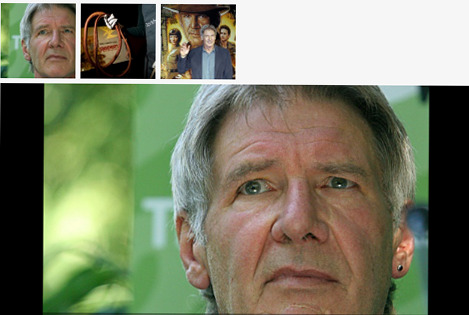
Dog's name
The inspiration behind the character came from both real and imaginary sources.
There was the archeologist Hiram Bingham who discovered Machu Picchu, Tintin creator Herge, and Clint Eastwood's Westerns.
As for the name, Lucas first chose Indiana Smith -- changed to "Jones" by Spielberg -- taking the first part from his Alaskan Malamute pet dog, already the inspiration for Chewbacca in "Star Wars".
Bond without the gadgets
Although Spielberg dreamed of directing a James Bond film, Lucas insisted part of Indy's appeal was that this hero would be a "Bond without the gadgets".
There would be no explosive watches or Aston Martins with ejectable seats -- Indy would triumph with ropes, knives and ingenuity.
He bore all the hallmarks of a classic Lucas-Spielberg character: a geeky hero with a comical, ironic side, whose affairs with women were more complicated than any Bond-style conquests.
Spielberg's comeback
While the Indiana Jones project was brewing, Spielberg was on the back foot after his film, "1941", flopped.
He was also gaining a reputation as a big-spending director who ran overtime and could be tyrannical on set, even leaving two days early from the filming of "Jaws", fearing his team would try to drown him, such was his unpopularity.
Lucas's project marked a career turning point for Spielberg -- proving he could work fast, on time, in budget, and with big success.
Ford not first choice
Spielberg wanted Ford, but Lucas was reluctant to re-use his lead actor from "Star Wars", from which he wanted a break.
Nick Nolte, Jeff Bridges and Bill Murray were considered before the spotlight settled on Tom Selleck, but the mustachioed charmer had already signed up for TV detective show "Magnum, PI".
Later, thousands of actresses tried out for the role of Willie in the second film, including Sharon Stone, but it finally went to Kate Capshaw.
Capshaw did not go on to a glittering Hollywood career, but she did become Mrs Spielberg in 1991.
Eye of the cobra
Indy's extreme fear of snakes, or ophidiophobia, has been a frequent plot point.
For the classic scene in which Indy falls into a pit full of the slithering reptiles, Spielberg did not hold back on the props: 6,500 live cobras, plus a few bits of watering hoses.
0 notes
Text
T.G. Sheppard Announces Crystal Gayle, Clint Black, Mark Wills & Jake Owen As Future Guests On The T.G. Sheppard Show

Country music legend and SiriusXM host T.G. Sheppard continues to bring some of the hottest names in country music as his special guests on The T.G. Sheppard Show on SiriusXM’s Prime Country (ch. 58). Airing weekly each Friday at 3 pm ET and again on Saturdays at 12 am ET and Wednesdays at 12 pm ET, Sheppard plays some of the biggest hits from the 80s and 90s and shares behind-the-scenes stories with the most recognizable names in country music from that era. With a different guest each week, Sheppard has recently shared exclusive interviews with Reba McEntire, Lee Greenwood, Tracy Lawrence, Barbara Mandrell, The Bellamy Brothers, and Travis Tritt, just to name a few, and is excited to announce his upcoming guests will include Crystal Gayle, Mark Wills, Clint Black, and Jake Owen. T.G. Sheppard fans will not want to miss this one-of-a-kind show, which can also be heard on-demand on the SXM App.
“To be part of the SiriusXM Radio family with my own show is more exciting now than ever,” shares Sheppard. “I’m also amazed and appreciate so deeply how much my music is still being played on the radio and enjoyed by music fans everywhere. It seems like only yesterday that we were celebrating the release of “Slow Burn.“ It’s still one of my favorites even though it’s been 40 years. My Oh My! Where does the time go?”
Due to his success throughout the 80s and 90s with a total of 21 #1 hits, The T.G. Sheppard Show’s popularity continues to soar on SiriusXM’s Prime Country. He is currently celebrating the 40th Anniversary of his hit album ‘Slow Burn’ which was released in 1983 and the title track became Sheppard’s thirteenth number-one hit. The album also included the popular singles “Make My Day” with Clint Eastwood and “Somewhere Down The Line.”
How subscribers can listen:
SiriusXM’s Prime Country is available to subscribers nationwide on SiriusXM radios, the SXM App, and with Amazon Alexa, Google Assistant, or however they stream at home. Streaming access is included with all of SiriusXM’s trials and most popular plans.
T.G. Sheppard Upcoming Tour Dates:
FEB 11 – Dixie Carter Performing Arts Center / Huntingdon, Tenn.
MAR 12 – Florida Strawberry Festival / Plant City, Fla.
MAR 25 – Wharton County Youth Fair / Wharton, Texas
APR 22 – Orange Blossom Opry / Weirsdale, Fla.
MAY 27 – Real Life Amphitheater / Selma, Texas
JUN 16 – Blue Gate Music Hall / Shipshewana, Ind. (With T. Graham Brown)
AUG 05 – Sugar Creek Casino / Hinton, Okla.
AUG 12 – Liberty Showcase Inc. / Liberty, N.C.
NOV 03 – Private Event / Nashville, Tenn.
For more information on T.G. Sheppard and his schedule, visit his website, YouTube page, or follow him on social media:
Instagram | Twitter | Facebook | Website | YouTube
About T.G. Sheppard:
T.G. Sheppard has always had an unstoppable passion for music. That passion, combined with a steadfast dedication to entertainment, has made him one of the most popular live performers in country music today. With 21 #1 hit songs, his live concerts are chock full of his chart-topping tunes like “Last Cheater’s Waltz,” “I Loved ‘Em Every One,” and “Do You Wanna Go To Heaven.” Sheppard released his latest album, Midnight In Memphis, in 2019. With more than 40 years of show business under his belt, it’s only natural that Sheppard has developed a reputation as a solid performer who delivers exactly what audiences want. All this and more, combined with a steadfast commitment to entertainment, has truly made T.G. Sheppard one of the great legends in country music.
About SiriusXM:
Sirius XM Holdings Inc. (NASDAQ: SIRI) is the leading audio entertainment company in North America and the premier programmer and platform for subscription and digital advertising-supported audio products. SiriusXM’s platforms collectively reach approximately 150 million listeners, the largest digital audio audience across paid and free tiers in North America, and deliver music, sports, talk, news, comedy, entertainment, and podcasts. Pandora, a subsidiary of SiriusXM, is the largest ad-supported audio entertainment streaming service in the U.S. SiriusXM’s subsidiaries Stitcher, Simplecast and AdsWizz make it a leader in podcast hosting, production, distribution, analytics, and monetization. The Company’s advertising sales arm, SXM Media, leverages its scale, cross-platform sales organization, and ad tech capabilities to deliver results for audio creators and advertisers. SiriusXM, through Sirius XM Canada Holdings, Inc., also offers satellite radio and audio entertainment in Canada. In addition to its audio entertainment businesses, SiriusXM offers connected vehicle services to automakers. For more about SiriusXM, please go to siriusxm.com.
# # #
Suggested post:
.@TGSheppardMusic announces upcoming guests @TheCrystalGayle @MarkWillsMusic @Clint_Black and more on #TheTGSheppardShow on @SiriusXM’s @SXMPrimeCountry Channel 58
Read the full article
0 notes
Text
Clint Eastwood: The Last Legend
Clint Eastwood: The Last Legend
The portrait of the last cowboy Hollywood legend dives into the 65 years of an extraordinary career in Hollywood, highlighted iconic films like The Good, the Bad and the Ugly, as well as Million Dollar Baby, Mystic River and Gran Torino all the way to Cry Macho in 2021. It is no small task to cover more than 60 years of cinema history, especially when it is trying to surveyed with such breadth…

View On WordPress
0 notes
Photo

Oh happy day…or is it? Kidding!!! (all the Gemini’s out there are DYING…they got it)😉 Anyhow, today the sun transitions into it’s last phase of Spring before bringing us into Summer. Known for their fickle nature, this capricious duo shares a birthday’s with the following famous faces: Tom Holland & Chris Evans @tomholland2013 @chrisevans Marilyn Monroe & Judy Garland & Zoe Saldana @zoesaldana Anne Frank Prince & Sir Paul McCartney & Bob Dylan @prince @paulmccartney @bobdylan Sir Arthur Conan Doyle Lou Gehrig George Perez MC Escher & Paul Gaugin & Henri Rousseau Robert Rodriguez & Clint Eastwood @rodriguez Allen Iverson @theofficalai3 Morgan Freeman @morganfreeman Mike Myers @mikemyers David Rockefeller & Cornelius Vanderbilt Danny Elfman & Richard Wagner @dannyelfman Kanye West & Tupac Shakur & Notorious B.I.G. @kanyewest @2pac @thenotoriousbig …and so many more (lots of rappers TBH)… As for the origin tale: Latin for #twins this celestial duo is the third astrological sign in our collection. It begins May 21st, and ends on the Summer #Solstice . It is ruled by the planet #Mercury and is aligned with the element of #air The legend behind this one is closely associated to the #Dioscuri or #Castor and #Pollux the twin half-brothers who shared a mother ( #Leda ), but different fathers, one (Pollux), who was #Zeus When Castor (who was mortal), died, Pollux, begged Zeus to share his immortality with his brother. Zeus complied by making them the Constellation we know today as Gemini. #astrology #horoscope #vectorart #adobeillustrator #adobephotoshop #artist #art #illustration #illustrator #illustratorsoninstagram #digitalart #digitalartist #digitalillustration #digitalpainting #design #designer #orangecountyart #orangecountyartist #losangelesart #losangelesartist #stilesofart @adobe @photoshop @_adobeillustrator_ https://www.instagram.com/p/Cd3ZMwNLFQh/?igshid=NGJjMDIxMWI=
#twins#solstice#mercury#air#dioscuri#castor#pollux#leda#zeus#astrology#horoscope#vectorart#adobeillustrator#adobephotoshop#artist#art#illustration#illustrator#illustratorsoninstagram#digitalart#digitalartist#digitalillustration#digitalpainting#design#designer#orangecountyart#orangecountyartist#losangelesart#losangelesartist#stilesofart
0 notes
Photo

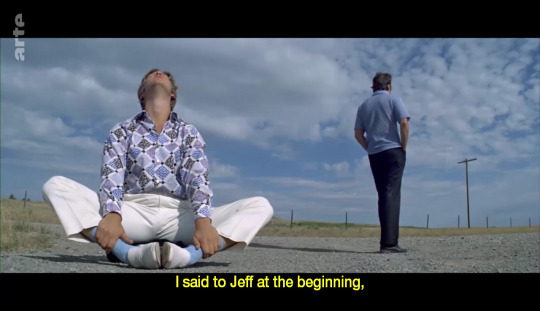


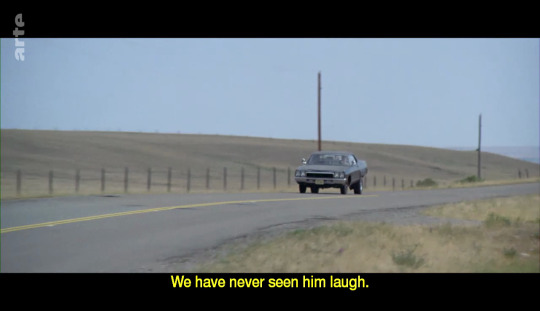
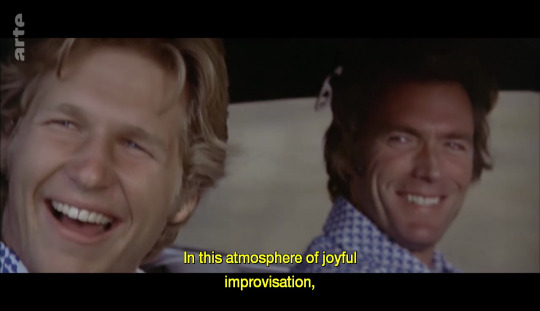

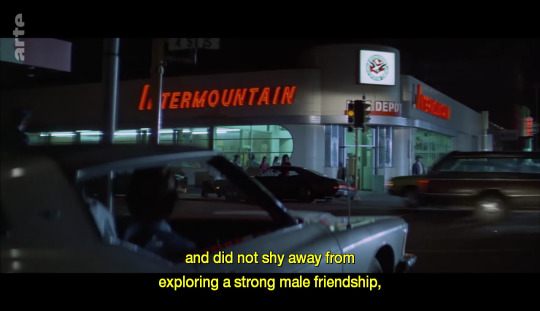
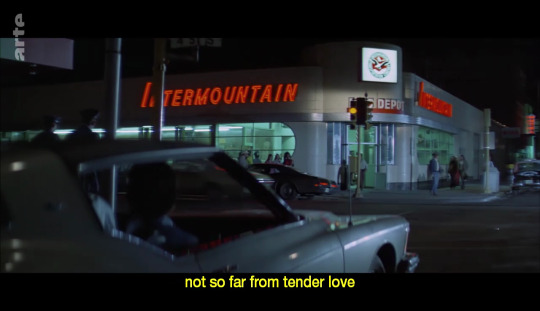

Clint Eastwood, la dernière légende (Clélia Cohen, 2022)
#Clint Eastwood la dernière légende#Clint Eastwood#Clélia Cohen#quote#Jeff Bridges#Michael Cimino#Thunderbolt and Lightfoot#2022#documentary#cars#film#cinema#Clint Eastwood: The Last Legend#laugh#smile#road
215 notes
·
View notes
Text
BttF JanAUry Day 6: Local Legend Clint Eastwood AU

Today should be my last day here. Or, at least I hope it will. There's been enough set backs already and I just want to go home. I wont lie, this whole thing has been pretty cool but geez it's tiring.
Anyway, the train should be here tomorrow, and this time i dont have any last minute duels to attend to so... that should be that.
I am so tired of this stupid decade.
M. McFly
"Clint Eastwood"
^in case my attempt at script was hard to read
#back to the future#bttf janaury#local legend clint eastwood#< ive actually posted about this au here!!#fiddl’s fiddles#fiddl is sorry about your barn
19 notes
·
View notes
Text
Top 10 Favorite Westerns
I love westerns ,but I recognize not everyone is .So I wanna show off my favorites as recommendations for people getting into westerns
1.The Good the Bad and the Ugly (1966)
My second favorite movie .Three men after some treasure in a cemetary during the Civil War .Great music, great scenery and three great central performances by Clint Eastwood,Eli Wallach and Lee Van Cleef

2.True Grit (2010)
Ayoung girl sets out with a drunken one eyed marshal to capture the man who killed her father. Had to choose between the original and the remake ,both are great,but the remake is really the movie that made me love westerns and Jeff Bridges makes this movie
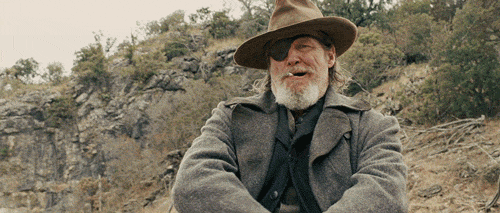
3.High Noon (1952)
A town marchal on his last day before his retirement learns an old foe is coming into town to kill him and for various reasons no one will come to help .THis is my favorite classic western ,while on the surface a simple good guy vs bad guy western ,its really about a man left behind by the people who claim to be his friends
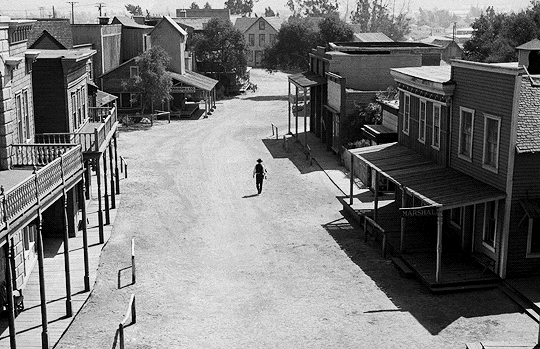
4.Tombstone(1993)
A romatacised retelling of the true story of Wyatt Earp,his brothersVirgil and Morgan ,and friend Doc Holiday as they take on the criminals known as the Cowboys. THIS MOVIE IS COOL .Amazing cast (In cluding Val Kilmer in his best role) and extremely qoutable ,I highly reccomend this film

5.The Ox Bow Incident(1943)
A town goes hunting for three men with intent on hanging them. This is a film about the dangers of mob mentality .I reallly reccomend this if your inn the mood for a heavier western or one with a great ensamble cast (With Henry Fonda in a good hero role )

6.Silverado(1985)
Four men travel together to the town of Silverado ,which is being run by bad guys .This is the BEST "White hat vs Black Hat " western ,a fun romp about good guys taking on bad guys ,with great performances by Kevin Kline,Danny Glover,Linda Hunt,Kevin Costner ,John Cleese ,Brian Denehey ,Scott Glenn and Jeff Goldblum

7.The Magnificent Seven(1960)
A small village recruits seven gunfighters to take on a group of bandits .Based on Akira Kurosawas Seven Samurai ,this movie has a cool cast (Yul Brynner ,Steve McQueen ,Charles Bronson,Jame Coburn,etc ) ,a phenominal villain in the form of Eli Wallach ,and an interesting view on the idea of the heroic gunslinger
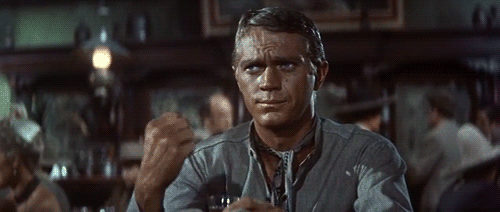
8.Dead Man (1995)
An accountant who shares the name of the poet William Blake ends up with a bullet in his chest ,being chased by bounty hunters ,and hanging out with a Native American named Nobody who is convinced he is a wandering spirit .This is a darkly funny and very odd film with a frankly bizarre cast (Lance Henriksen ,John Hurt,Alfred Molina ,Iggy Pop,Billy Bob Thornton ,Crispin Glover,Jared Harris , and Robert Mitchum just to name a few ) .The scene stealer of the film really is Gary Farmer as Nobody
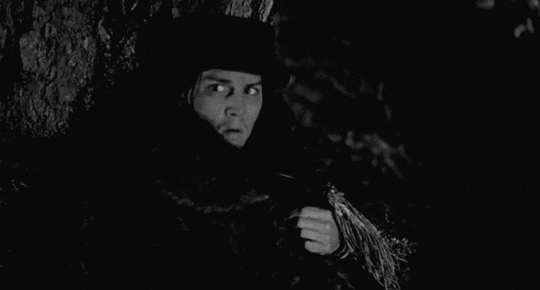
9.Once Upon A Time In the West (1968)
.....Im kind of at a loss to how to describe this plot ,needless to say its an epic about a nameless harmonica playing gunslinger with revenge on the mind ,a recently married and recently widowed woman ,a framed bandit ,and usually heroic Henry Fonda as one hell of a slimey villain .
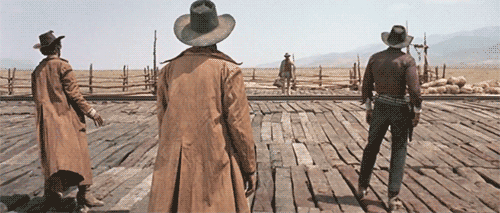
10.The Man Who Shot Liberty Vlance (1962)
I am actually not gonna describethe plot cause this one is great going in blind .Will say ya get western veterens James Stewert ,John Wayne ,Lee Marvin (As one hell of a villain ) and its directed by western legend John Ford
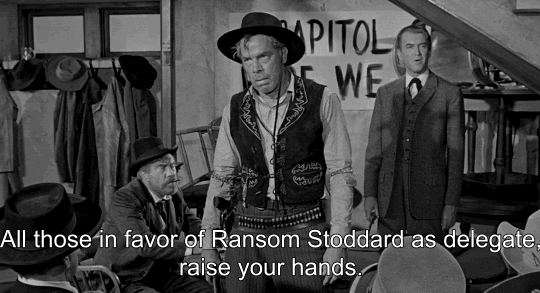
Any one got any favorite westerns,feel free to share them
@ariel-seagull-wings @metropolitan-mutant-of-ark @marquisedemasque @theancientvaleofsoulmaking @princesssarisa @amalthea9 @sunlit-music @filmcityworld1
61 notes
·
View notes
Text
A constantly updating list of my favorite soundtracks, in no particular order
First Knight - Jerry Goldsmith
The Mask of Zorro - James Horner
Ben-Hur - Miklós Rózsa
Hook - John Williams
1917 - Thomas Newman
Star Wars original / prequel / sequel trilogies - John Williams
Chain Reaction - Jerry Goldsmith
Legends of the Fall - James Horner
Pocahontas - Alan Menken and Stephen Schwartz
The Princess Bride - Mark Knopfler
Lord of the Rings trilogy - Howard Shore
Chariots of Fire - Vangelis
Rogue One - Michael Giacchino
Medicine Man - Jerry Goldsmith
Beauty and the Beast - Alan Menken
Dances with Wolves - John Barry
Indiana Jones - John Williams
Kung Fu Panda - Hans Zimmer
Jurassic Park - John Williams
Cinderella - Patrick Doyle
Finding Nemo - Thomas Newman
Titanic - James Horner
The Good, the Bad, and the Ugly - Ennio Morricone
The Hunger Games trilogy - James Newton Howard
The Mandalorian - Ludwig Goransson
Alice’s Adventures in Wonderland - Joby Talbot
Once Upon a Time in the West - Ennio Morricone
The Last of the Mohicans - Trevor Jones and Randy Edelman
Braveheart - James Horner
Gladiator - Hans Zimmer
Ratatouille - Michael Giacchino
The Patriot - John Williams
The Big Country - Jerome Moross
The Young Victoria - Ilan Eshkeri
The Shawshank Redemption - Thomas Newman
The Lake House - Rachel Portman
Willow - James Horner
The Magnificent Seven - Elmer Bernstein
The Chronicles of Narnia trilogy - Harry Gregson-Williams and David Arnold
King of Kings - Miklós Rózsa
Pirates of the Caribbean - Hans Zimmer
Blade Runner - Vangelis
Barbie and the Twelve Dancing Princesses - Arnie Roth
Courageous - Mark Willard
The Mission - Ennio Morricone
Horse Crazy - Merrill Jenson
To Kill a Mockingbird - Elmer Bernstein
Forrest Gump - Alan Silvestri
Enchanted - Alan Menken
Somewhere in Time - John Barry
Mary Poppins - Irwin Costal
Casablanca - Max Steiner
True Romance - Hans Zimmer
The Theory of Everything - Jóhann Jóhannsson
Changeling - Clint Eastwood
Kill Bill - RZA and James Last
The English Patient - Gabriel Yared
The Black Stallion Returns - Georges Delerue
Conquest of Paradise - Vangelis
Barbie as Rapunzel - Arnie Roth
How the West Was Won - Alfred Newman
Gone with the Wind - Max Steiner
The Polar Express - Alan Silvestri
Amazing Grace - David Arnold
Masada - Jerry Goldsmith and Morton Stevens
Bandolero! - Jerry Goldsmith
Gettysburg - Randy Edelman
Young Catherine - Isaac Schwarts
MacGyver - Randy Edelman
Inception - Hans Zimmer
Empire of the Sun - John Williams
First Blood - Jerry Goldsmith
Jason Bourne series - John Powell, James Newton Howard, and David Buckley
9 notes
·
View notes
Text
In Memory of Brian, Fred and Jerry by Susan King

I mourn the loss of Hollywood legends, especially those I have interviewed over the years. I broke into tears when Debbie Reynolds died four years ago, recalling our last chat together in 2016 when we did a duet of “Moses Supposes.” And I still haven’t watched TO KILL A MOCKINGBIRD (’62) since Gregory Peck died in 2003. I had the opportunity to interview the handsome Oscar-winner at his now torn down home in 1997 and 1999. He was everything you’d hope he would be – sweet, intelligent and funny. He also loved Bob Dylan. His last words to me as he walked me to my car were: “You are a most interesting young lady.”
In 2020 alone, I lost over 20 former interviewees including Kirk Douglas, whom I interviewed eight times between 1986-2017, and my beloved Olivia de Havilland, who I found to be delightful and a bit ribald in the two interviews I did with her. I got more than a little misty when Brian Dennehy, Fred Willard and Jerry Stiller died this year. They were supremely talented and made our lives a little brighter with their performances. And, they all were great guys and fun interviews.
Brian Dennehy
I interviewed Brian Dennehy, who died in April at the age of 81, several times in the early 1990s when I was at the L.A. Times. The former U.S. Marine and football player was intimidating at first sight. He was tall, burly and barrel-chested. He had a no-nonsense quality about him, and he spoke his mind. But he also was funny.

In 1991, discussing how hard it was for some actors to land parts after starring in a TV series, he noted “coming off a TV series is a tough deal, and you go into limbo land for a while, if not forever. Most actors go immediately to the ‘Island of Lost Actors’ and stay there. Troy Donahue is the mayor.” Dennehy never went to that island. Not with the complex and often memorable performances he gave in such films as FIRST BLOOD (’82), SILVERADO (’85), COCOON (’85), PRESUMED INNOCENT (’90) and as Big Tom in the comedy TOMMY BOY (’95).
He was nominated for five Emmys, including one for his chilling turn as serial killer John Wayne Gacy in the miniseries To Catch a Killer (’92).
I had one of the most extraordinary evenings at the theater in 2000 when Dennehy reprised his Tony Award-winning role as the tragic Willy Loman at the Ahmanson Theatre in Los Angeles in the lauded revival of Arthur Miller’s masterpiece Death of a Salesman. It was a gut-wrenching performance that left me emotionally exhausted. He earned another Tony in 2003 as James Tyrone in the revival of Eugene O’Neill’s superb Long Day’s Journey into Night. And he never stopped working.
Shortly after his death, the drama DRIVEWAYS (2020) was released on streaming platforms. And it could be Dennehy’s greatest performance. He plays Del, an elderly widower and Korean War vet who sparks a warm friendship with Cody, the young boy next door. The reviews for the film (it’s at 100% fresh on Rotten Tomatoes) and Dennehy have been glowing. The L.A. Times’ Justin Chang wrote that Dennehy’s Del is as “forceful and tender a creation as any in this great actor’s body of work.” And Jeannette Catsoulis of The New York Times stated: “What we might remember most, perhaps appropriately, are Dennehy’s warm, weary features and rich line readings. In a lovely final monologue, Del advises Cody to avoid rushing past the experiences in life that matter, as they pass so quickly on their own. Much like the careers of beloved actors.”
Fred Willard
I first encountered Fred Willard as the clueless sidekick of sleazy talk show host Barth Gimble (Martin Mull) in the late 1970s on the syndicated comedy series Fernwood Tonight and its continuation America 2-Night. I quickly became a fan, and that admiration grew when he became a member of Christopher Guest’s stock company of zanies in such comedies as WAITING FOR GUFFMAN (’96) and BEST IN SHOW (2000). In the latter, he played the equally clueless dog show announcer Buck Laughlin who quipped in his color commentary, “And to think that in some counties these dogs are eaten.”
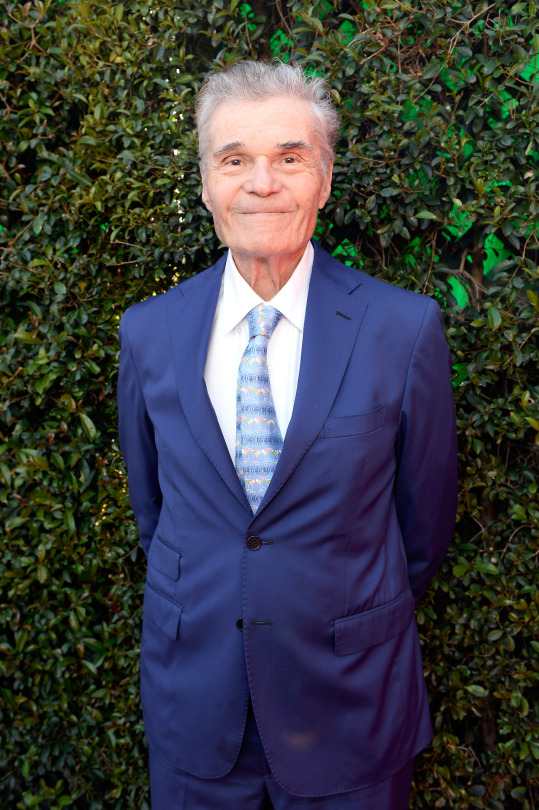
Willard told me in a 2012 L.A. Times interview that he didn’t think he was funny until he was an adult. “I always loved comedy growing up – Bob Hope, Red Skelton and Danny Kaye,” said Willard, who died in May at the age of 86.
Willard got a serious part in Tennessee Williams’ one-act in a summer theater group when he was in his 20s. “I was getting laughs on all the lines,” he noted. “The director got upset because the audiences were always laughing. I didn’t try to do it deliberately. Then I realized I would say things around people, and they would laugh. I didn’t mean to be funny. I have always been relaxed around comedy.”
Just as Dennehy, Willard kept working. In fact, he received an Emmy nomination posthumously for his hilarious turn as Ty Burrell’s goofball dad on ABC’s Modern Family. He told me he wished he could try to do more dramatic fare like in Clint Eastwood’s World War II drama Flags of Our Fathers (2006). Willard even called his agent to see if he could get a role in the movie. “Clint Eastwood’s people called back and said, ‘We love Fred, but we are afraid if he appeared on the screen, they might start to laugh.’’’
Jerry Stiller
Jerry Stiller was a real sweetie and also very thoughtful. He sent me a lovely thank you note when I interviewed him and his wife, Anne Meara, in the early 1990s. When I talked to him for his son Ben Stiller’s remake of THE HEARTBREAK KID (2007), Stiller sent me a lovely bouquet of flowers. Ditto in 2010 when I interviewed the couple for a Yahoo! Web series Stiller & Meara: A Show About Everything. I also received Christmas cards until Meara died in 2015.

Baby boomers remember Stiller, who died at 92 in May, and Meara for their smart and sophisticated comedy act, in which the majority of the humor came from the fact that he was Jewish and she was born Irish Catholic. They recorded albums, were popular on the nightclub circuit and did The Ed Sullivan Show three dozen times. They split up their act when musical variety series went away.
Both were terrific dramatic actors. In fact, I saw Stiller in the 1984 Broadway production of Hurlyburly, David Rabe’s scathing look at Hollywood, and he did a 1997 production of Chekhov’s The Three Sisters. Of course, Stiller garnered even more success in his Emmy-nominated role as Frank Costanza, the caustic father of George (Jason Alexander) on NBC’s Seinfeld (1993-98) and was the best reason to watch CBS’ sitcom The King of Queens (1998-2007) as Kevin James’ acerbic father-in-law
But I most remember that 2010 interview where Stiller and Meara bantered back and forth much to my enjoyment. Here they talk about Ed Sullivan:
Anne: I never liked him.
Jerry: You are out of your mind. You never liked him?
Anne: He scared stuff out of me. I am talking about Mr. Sullivan himself. I wasn’t the only one. There were international favorites throwing up in the wings—singers and tenors and guys who spin plates. It was live. We were scared.
Jerry: Ed Sullivan brought us up to the level that we knew we never could get to – him standing there on the right side of the wings laughing, tears coming out of his eyes and then calling us over and saying, ‘You know, we got a lot of mail on that last show you did.’ I said, ‘From Catholic or Jewish people?’ He said, ‘The Lutherans.’”
#Jerry Stiller#brian dennehy#in memoriam#Fred Williard#Ben Stiller#TCM Classic Film Festival#LA Times#Susan King#TCM#Turner Classic Movies#comedians#actors
138 notes
·
View notes
Text
music shuffle tag!
you can usually tell a lot about a person by the type of music they listen to. put your favorite playlist on shuffle and list the first ten songs then tag ten people! no skipping!
tagged by @miniyeo thank u for tagging me💕🤓✌🏻
and @rayregalia @samdravvs @transcatboymegumi @hiding--places just if you want to join🤓
6 notes
·
View notes